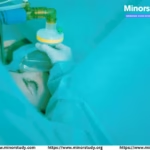All About MBBS (Bachelor of Medicine, Bachelor of Surgery)
Overview: MBBS is an undergraduate medical degree that is awarded to individuals who successfully complete medical school. The course is typically 5 to 6 years long, depending on the country, and involves both theoretical studies and practical clinical training. The degree equips students with the knowledge and skills to become doctors and pursue various specialties in the field of medicine.
MBBS Subjects Overview by Year:
Year | Subjects | Brief Description |
Year 1 | 1. Anatomy | Anatomy focuses on the structure of the human body, including the skeletal, muscular, circulatory, and nervous systems. Students learn to identify parts through dissection. |
2. Physiology | Physiology covers the functions of the human body, including how organs and systems work together to maintain homeostasis. It includes lab work for practical understanding. | |
3. Biochemistry | Biochemistry deals with the chemical processes within and related to living organisms, focusing on molecular biology, enzymes, metabolism, and genetics. | |
Year 2 | 1. Pathology | Pathology involves studying diseases, their causes, effects, and diagnostic techniques. It covers cellular pathology, microbiology, and immunology. |
2. Microbiology | Microbiology focuses on microorganisms (bacteria, viruses, fungi, and parasites) and their role in human diseases. It includes diagnostic methods and treatment options. | |
3. Pharmacology | Pharmacology teaches the study of drugs, their actions, uses, and side effects. Students learn about different types of medicines used in treatment and their mechanisms. | |
Year 3 | 1. Forensic Medicine | Forensic medicine connects medical knowledge to legal cases. It includes topics like autopsies, trauma investigation, and determining causes of death in criminal cases. |
2. Community Medicine/Public Health | This subject covers public health, disease prevention, epidemiology, and healthcare policies. Students focus on the health of populations and the role of the medical professional in society. | |
Year 4 | 1. Internal Medicine | Internal medicine focuses on the diagnosis and treatment of adult diseases, including chronic and complex illnesses that affect various systems of the body. |
2. Surgery | Surgery covers surgical techniques, including diagnosis, treatment, and post-operative care for a variety of conditions. Students gain hands-on experience in surgical procedures. | |
3. Obstetrics and Gynecology | Obstetrics deals with pregnancy, childbirth, and postnatal care, while gynecology focuses on the female reproductive system, addressing health issues like menstrual disorders. | |
Year 5 | 1. Pediatrics | Pediatrics covers the medical care of infants, children, and adolescents. Students learn about childhood diseases, vaccinations, and growth patterns. |
2. Orthopedics | Orthopedics focuses on bone, joint, and muscle conditions, including fractures, arthritis, and congenital deformities. Students also learn about surgical treatments in this field. | |
3. Ophthalmology | Ophthalmology involves the study of the eyes and visual systems. It covers vision, eye diseases, surgeries, and the treatment of eye-related conditions. | |
4. ENT (Ear, Nose, and Throat) | ENT deals with disorders of the ear, nose, throat, and related structures of the head and neck. It includes both medical and surgical aspects of treatment. | |
Year 6 | 1. Psychiatry | Psychiatry focuses on mental health, including the diagnosis and treatment of mental disorders, therapy methods, and psychopharmacology. |
2. Dermatology | Dermatology covers the diagnosis and treatment of skin conditions, including eczema, psoriasis, skin cancer, and infections. Students also learn about skin treatments and therapies. | |
3. Radiology | Radiology involves the use of imaging technologies (X-rays, MRIs, CT scans, etc.) for diagnosing and treating diseases. Students learn about interpretation and patient care. | |
4. Anesthesia | Anesthesia teaches students about the principles and practices of anesthesia during surgeries, including the management of pain and sedation. | |
Clinical Training | Internship (Rotations) | In the final year, students complete an internship where they rotate through various departments (e.g., medicine, surgery, pediatrics) to gain hands-on clinical experience. |
Detailed Explanation of Key Subjects in MBBS:
Anatomy: The study of the body’s structure. Students examine bones, muscles, organs, and tissues, helping them understand the location and function of each part.
Physiology: This subject explains the functions of different parts of the body, like how the heart pumps blood or how the nervous system transmits signals.
Biochemistry: Students delve into the chemical processes that occur within the body, such as digestion, energy production, and cellular function.
Pathology: Pathology involves the study of disease processes. It helps doctors understand the causes of illness and how diseases affect the body’s tissues and organs.
Microbiology: Microbiology teaches about pathogens (bacteria, viruses, fungi) and how they cause infections in humans, and how to diagnose and treat these infections.
Pharmacology: In this subject, students learn how medications affect the human body. It covers drug mechanisms, uses, dosages, and side effects.
Surgery: The surgical curriculum covers how to diagnose and treat injuries or diseases through operations. Practical skills include surgical procedures and post-operative care.
Obstetrics & Gynecology: This area focuses on pregnancy, childbirth, and reproductive health. Students learn to manage labor, delivery, and common reproductive issues.
Pediatrics: Pediatrics deals with the healthcare of children, including growth and development, vaccinations, and common childhood illnesses.
Orthopedics: This subject deals with the skeletal system and its disorders. Students learn about the treatment of fractures, deformities, and joint disorders.
Psychiatry: Psychiatry is about diagnosing and treating mental health disorders like depression, schizophrenia, and anxiety.
Radiology: Radiology involves using medical imaging techniques to look inside the body and diagnose illnesses. It is essential for visualizing internal conditions without surgery.
Conclusion: MBBS is a comprehensive medical program that provides students with a broad understanding of human health and prepares them to practice as medical professionals. The subjects taught in each year build upon one another, combining theoretical knowledge with practical skills to ensure a well-rounded education. Upon completion, graduates can choose various specialties in medicine, surgery, or other healthcare fields.








